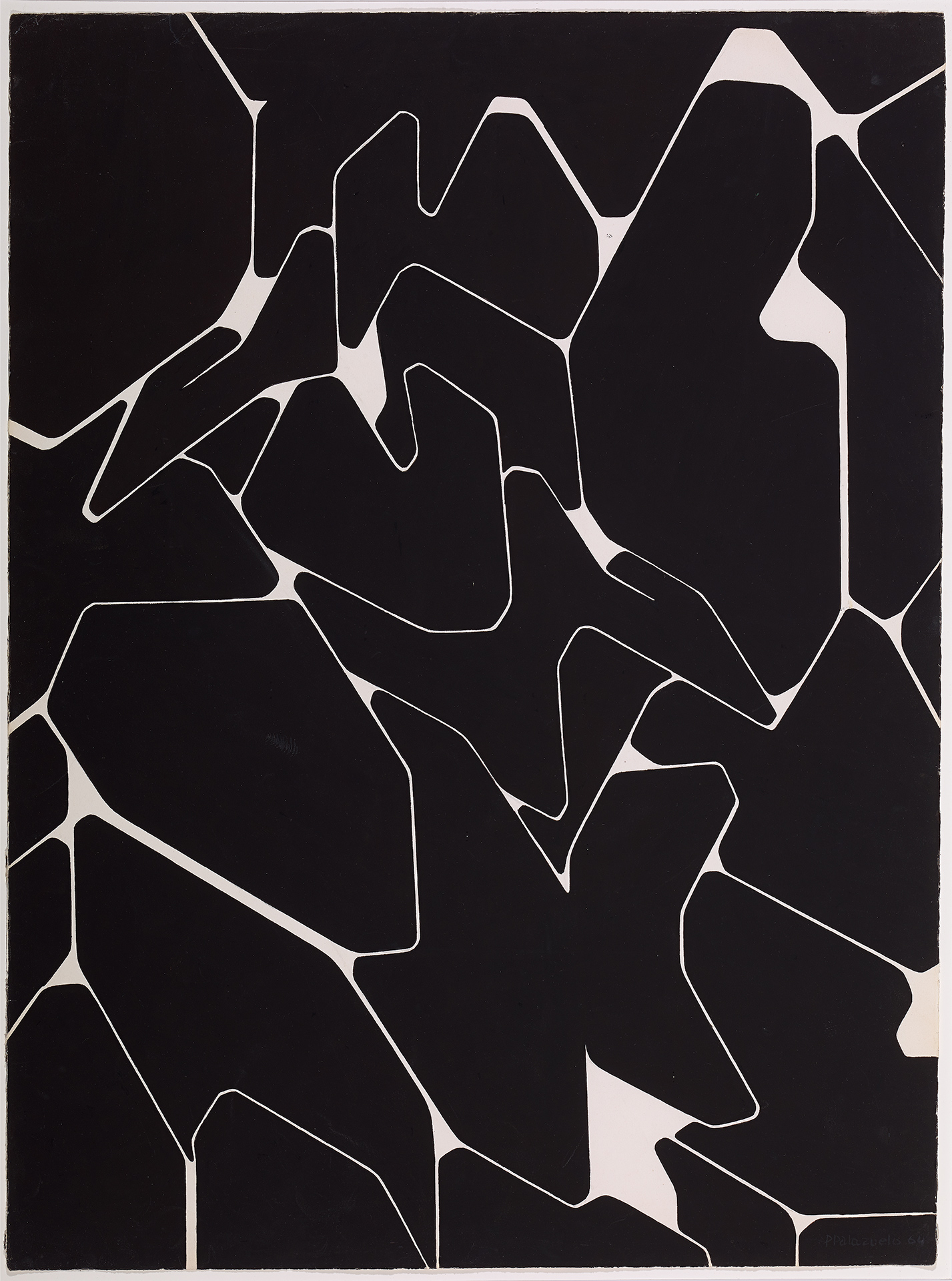
Pablo Palazuelo (Madrid, 1915 – Galapagar, Madrid, 2007)
Panoply I
1964
WORK INFORMATION
Gouache on paper, 78 × 58 cm
OTHER INFORMATION
Signed and dated in the lower right-hand corner: "P. Palazuelo 64"
A scholarly, learned, serene and precise artist, Pablo Palazuelo was one of the first Spaniards to wholeheartedly embrace abstraction as a visual language, and also one of the first Spanish abstract painters to be acknowledged by French and international critics in the 1950s. As a painter, he refined a persona language based on a very distinctive use of geometry that has made his entire oeuvre unmistakable.
In Palazuelo's work, drawing is the foundation of his visual thought; from it emanate all the lines, planes, figures and rhythms which, when infused with colour, turn into enigmatic, powerful paintings. Behind all of Palazuelo's artistic experiences is the longing to attain beauty: a beauty separate from the rules of classicism that corresponds to a modern sensibility, but which the artist doggedly pursued at the most profound levels of thought, turning to the study of spirituality, numerology, alchemy and depth psychology to achieve his purpose. For him the practice of art was a means of coming to know that which cannot be named, but which art can render visible. In a way, Palazuelo attempted to draw analogies between the methods of the occultists and the processes of artistic creation, and in fact this is one of the keys to unlocking the meaning of his artwork.
Panoplia I [Panoply I] and Lunariae correspond to a creative period in which the primitive geometric order inspired by late Cubism had softened, giving way to lines that resemble biological forms in a composition where geometry generates a world of broken curves and forking lines. In this geometry, the polygons have rounded their corners and become soft-edged figures. These two gouaches open our eyes to the labile frontier between drawing and painting, where the line, showing the white of the paper, delimits black surfaces that acquire an inordinate power.
During this period of creative maturity in the 1960s, Palazuelo's work was heavily influenced by his medievalist studies, as the title Panoply clearly indicates, as well as alchemy, the writings of Raymond Lully and the psychology of Carl G. Jung, evidenced by his use of the word Lunariae as the title of one of the works in the Banco Santander Collection. In 1972 this piece gave rise to a portfolio of eight etchings accompanied by an equal number of texts by the hermetic Austrian poet Max Hölzer. [Javier Maderuelo]

